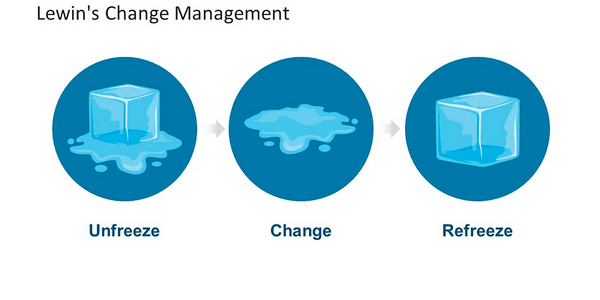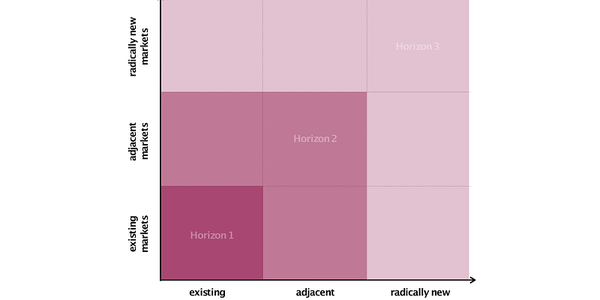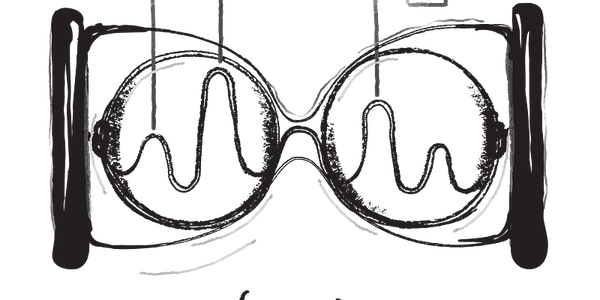«The biggest threat to business today is not digital technologies or increased competition. It’s loss of relevance and inability to change.»
Why is business transformation difficult?

Many studies over the past decade have revealed an over 80% rate of failure in digital business transformation initiatives (Rogers, 2016). We think that this daunting statistic signals the high-risk that companies need to consider when embarking on a transformation.
This is mainly because today’s environment adds an extra level of complexity to the already tricky large-scale organisational change.
As a company that has embarked on a transformation, we have to ask ourselves:
- What is the digital maturity of our business?
- How can we stand out from our competitors in the new digital landscape?
- How do we know your digital investments make business sense (Rauser, 2016)?
Both in theory and in practice, we find that transformations stand the best chance of succeeding when we focus on four key actions to change behaviours and mindsets:
- fostering understanding and conviction,
- reinforcing changes through formal mechanisms
- developing talent and skills, and
- role modelling (Basford and Schaninger, 2016).
Evaluation of different time-proven models to support a thriving digital transformation strategy.
ADKAR

Source: http://bit.ly/2uYhyVY
Change manager and former engineer Jeff Hiatt developed the ADKAR-model. The primary purpose of the model is to focus a group of goals which should be hit, instead of focusing on a set of steps (Hiatt and Trimble, 1998).
- Awareness
- Desire
- Knowledge
- Ability
- Reinforcement
Pros
The model enables us to help our employees to understand, interact with, and carry out changes. As a goal-focused model, it is easy to adapt it to our company culture and structure. The focus is on people who will make employees feel like employers care (Hiatt, 2006).
Cons
The model is only built for incremental change, and its focus is narrow. For enabling macro-level change, or when there is uncertainty on how deep we need to go with transitions, this model would probably fail (Warrilow, 2010).
Kotter's eight-step change model

Source: http://bit.ly/2v2oWQm
John Kotter, professor of leadership at Harvard University, developed the eight-step change model after analysing 100 transitions in organisations. Kotter addressed the people affected by it instead of focusing on the change. The model consists of sequential steps which can be followed to be successful (Kotter, 2010).
- Establish a sense of urgency
- Creating the guiding coalition
- Developing a change vision
- Communicating the vision for buy-in
- Empowering broad-based action
- Generating short-term wins
- Never letting up
- Incorporating changes in the culture
Pros
This model helps to onboard employees who are resistant to change. It prepares employees to cope with change and has essential building blocks for effective communication (Todnem By, 2005).
Cons
The model is a top-down strategic approach. The challenge is to find times to include feedback loops to ensure the unleash the full potential of this model. While feedback is included as a part of step four, there would be more attention paid to creating a level that heavily refers to addressing frontline employees and allowing time for feedback (Eisenbach, Watson and Pillai, 1999).
Lewins three-step management model process

Source: http://bit.ly/2HouMxT
Psychologist Kurt Lewin coined the three-step management model process. The idea behind it was to help leaders to facilitate and to understand transitions (Lewin, 1947).
- First we «unfreeze» the status quo by creating a compelling message which encourages employees to let go of the way things have always been or done and to open up to something new. The idea is to lead people to accept a new belief system involving the changes. Emphasizing the «why» is critical here.
- Then we focus on change with clear communication, destroying rumours while involving people in the process.
- Lastly, we refreeze by adding the transition to the culture and finding new ways to sustaining it long term.
Pros
The model is easily digestible and thanks to its visual language it makes it clear what actions need to be taken. Furthermore, it allows us to think past quantitative analysis and to focus on qualitative means of working through change (Burnes, 2004).
Cons
How we can deal with people who are resistant to change is not discussed in the model at all. The assumption is that everyone will come around with enough encouragement and motivation. The rational model sounds great, but the difficulties might arise with the implementation. There is no guidance on how to overcome such issues (Burnes, 2004).
What makes digital transformations fail?
«Every industry and every organisation will have to transform itself in the near future. What is coming at us is bigger than the original internet, and you need to understand it, get on board with it and figure out how to transform your business.» — Tim, O’Reilly, Founder and CEO, O’Reilly Media.
Many factors can impact the success rate of any change program:
- Excessive caution
- Fear of the unknown
- Lack of focus
- Running out of money
- Lack of talent
- Lack of discipline
- Failure to learn
- Change fatigue
- Going it alone
- Going too slowly
One of the critical components will be a clear understanding of what matters to the success of the change program (Arora et al., 2017).
Three horizons thinking

«Three horizons thinking» is an effective method for making sense of and facilitating cultural transformation and exploring innovation and wise action in the face of uncertainty and not-knowing (Sharpe, 2013).
- Learning to work with the Three Horizons enables teams to develop a shared language, freeing up creativity to collectively navigate toward a viable future.
- It helps us understand how today’s decisions and priorities will impact our future.
- Individuals will have their perspectives towards the horizon orientation. These orientation need to be aligned otherwise they can unconsciously affect the quality of decisions as well as team cohesion.
- The three horizons help teams to develop a shared language. This will ultimately foster creativity and will help to navigate toward a variable future.
The three horizons help us to stretch our thinking and to embrace the short, medium and long-term. They enable us in a coordinated way to manage our innovation. The help us find a new way to create transformational change that has a chance to be successful. It makes it easier for us to deal with uncertainty and it enables us to see our future in the present (McGrath and Macmillan, 2014).
Understanding three horizon thinking
- Horizon one ‐ operating in the now
- Horizon two ‐ looking ahead, anticipating change
- Horizon three — the future, defining change and transforming
Horizon one defines the portion of the potential innovation space that is most similar to existing services or solutions. Most of the innovation focus in horizon one os on cutting costs and on improving efficiency. Innovation is incremental because market knowledge is high and the corresponding risks relatively low (Wright, 2017).
Horizon two is the point where we start building new capabilities into existing markets or extending existing capabilities into new markets. Horizon two is the transition between incremental and disruptive change which will happen in horizon three (Hill, 2017).
Horizon three is the place where the most significant innovation change will happen. New markets are created, or existing markets are disrupted or dramatically changed. Those attempting horizon three innovation are creating entirely new capabilities or technologies, creating new segments or markets, or both.
Understanding the impact of change
The change will happen, it constantly occurs, all around us — the only real questions are whether the innovator understands the size and scope of the change he is attempting to create? And, whether he can shape and influence the change needed to sustain his company’s needs?

For customers
A breakthrough or disruptive product or service will cause change for consumers. They will need to adjust their behaviours and actions to adapt to a new feature or solution. If the change is significant from the customer’s point of view, by offering them more value as other existing offers they will understand the change as reasonable (Keeley, 2013).
But any innovation that will radically impact the customer or industry will affect the innovator. We have to understand that we as innovators are not immune from a change such innovations create. There will always be ripple effects that follow innovations.
For competitors and our industry
A new service or product which is disruptive or a real breakthrough will have a direct impact on the industry. Changing industry norms or customer behaviour will create a new reality. For us, as an innovator, it will mean to continually adapt current processes and business models to perfect our innovation — changing at the same time we develop innovative products or services.
Thoughts on how you could start tackling this

Recognition
We have to begin with a classic assessment of our existing capabilities and expectations. Do we understand how innovation and change play together in our organisation? Do we know the need to become more adept at change and do we know how we can increase the pace of innovation? Is it clear how our strategy aligns with change?
Framing
Once this groundwork has been set, we can use the model to determine which resources and how much time we want to allocate to each horizon. We should talk about the expected risks and what returns we would like to gain. Once this is done, we need to ensure that we have the necessary skills to win the chosen strategy. Furthermore, it makes sense to focus all innovation on the selected horizon.
Building capabilities
Once we understand our current ability for change and innovation, and further the amount of innovation needed across the three horizons, we can then follow the amount and frequency of change that is required. This enables us to build capabilities to innovate more efficiently and to create the capacity to change more rapidly.
Ethics
«To give real service you must add something which cannot be bought or measured with money, and that is sincerity and integrity.» — Douglas Adams, author, scriptwriter, essayist.
Employees
Keeping our employees is one of the critical responsibilities when leading change and implementing innovations. We need to assess the impact any change will have on our employees when we are planning for change.
Disruption
Change and innovation are disruptive to everyone involved in our business. The disruption caused by change and innovation will have outcomes that we need to plan for.
Communication
Ethics plays a crucial role in the process of innovation and change. We need to ensure honest and open communication between our company and the public as well among the management and our employees. Transparency of our communication during the process of change needs to be ensured so that existing trust in our company will continue to live once the changes have been completed.
Teamwork
It is our responsibility to give everyone involved in our innovation and change process a stake in the outcome. Treating them in an ethical manner within the process will ensure better results in the long run.
References
- Arora, A., Groover, P., Dahlstrom, P. and Wunderlich, F. (2017). A CEO guide for avoiding the ten traps that derail digital transformations. Digital McKinsey.
- Baghai, M., Coley, S. and White, D. (2000). The alchemy of growth. Cambridge, Mass.: Perseus Books.
- Basford, T. and Schaninger, B. (2016). The four building blocks of change. McKinsey Quarterly, pp.1–5.
- Burnes, B. (2004). Kurt Lewin and complexity theories: back to the future?. Journal of Change Management, 4(4), pp.309–325.
- Burnes, B. (2004). Kurt Lewin and the Planned Approach to Change: A Re-appraisal. Journal of Management Studies, 41(6), pp.977–1002.
- Culkin, J. (1967). A schoolman’s guide to Marshall McLuhan. Saturday Review, pp.51–53, 71–72.
- Duhigg, C. (2016). What Google Learned From Its Quest to Build the Perfect Team. [online] Nytimes.com. Available at: https://nyti.ms/2qmuCjt [Accessed 9 Apr. 2018].
- Eisenbach, R., Watson, K. and Pillai, R. (1999). Transformational leadership in the context of organizational change. Journal of Organizational Change Management, 12(2), pp.80–89.
- Hackworks Inc. (2018). We imagine, organize, and execute hackathons.. [online] Available at: http://bit.ly/2GOYhfe [Accessed 11 Apr. 2018].
- Hiatt, J. (2006). ADKAR. Loveland, Colorado: Prosci Learning Center Publications.
- Hiatt, J. and Trimble, D. (1998). Best practices in managing change. [Loveland, CO]: ProSci.
- Hill, A. (2017). Sustaining Growth with the Three Horizons Model for Innovation. [online] Medium. Available at: http://bit.ly/2v0ASBX [Accessed 10 Apr. 2018].
- Keeley, L. (2013). Ten types of innovation. Hoboken: John Wiley & Sons.
- Kotter, J. (2010). Leading change. Boston, Mass.: Harvard Business Press.
- Lewin, K. (1947). Frontiers in Group Dynamics. Human Relations, 1(1), pp.5–41.
- McGrath, R. and Macmillan, I. (2014). Discovery-Driven Growth. Boston: Harvard Business Review Press, p.198.
- Metric, G. (2015). Top 10 Benefits of Hackathon Participation. [online] IOT Documentation. Available at: https://intel.ly/2HeSsqN [Accessed 11 Apr. 2018].
- Rauser, A. (2016). Digital strategy. South Carolina: CreateSpace Independent Publishing Platform.
- Rogers, B. (2016). Why 84% Of Companies Fail At Digital Transformation. [online] Forbes. Available at: http://bit.ly/2v4mI2Y [Accessed 12 Apr. 2018].
- Sharpe, B. (2013). Three horizons. Devon, United Kingdom: Triarchy Press.
- Todnem By, R. (2005). Organisational change management: A critical review. Journal of Change Management, 5(4), pp.369–380.
- Wahl, D. (2017). The Three Horizons of innovation and culture change. [online] Medium. Available at: http://bit.ly/2qmbqBf [Accessed 10 Apr. 2018].
- Warrilow, S. (2010). Strategies for Managing Change. Lynton Glenthorne Ltd.
- Wright, T. (2017). McKinsey’s Three Horizons of Growth Can Help You to Innovate. [online] Cascade Strategy. Available at: http://bit.ly/2GLnLpF [Accessed 10 Apr. 2018].